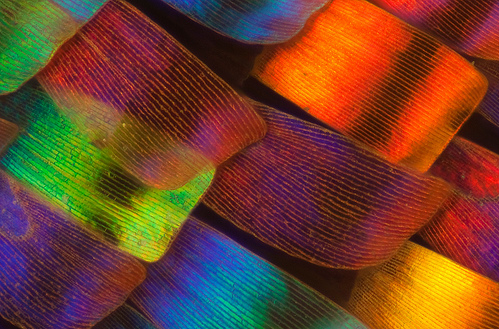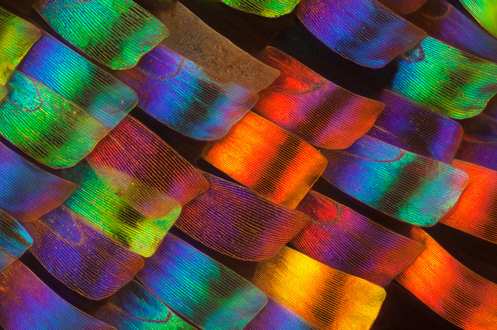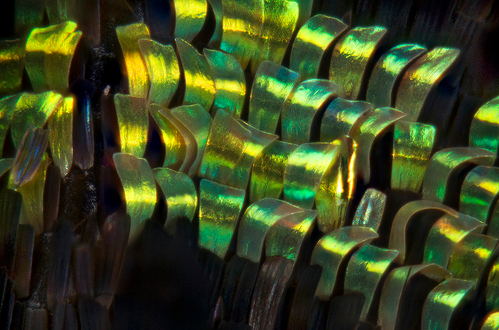finding-things-out: Iridescent butterfly wings Iridescent…







Iridescent butterfly wings
Iridescent surfaces, such as butterfly wings, help animals to elude potential predators. When these insects fly, the upper surface of their wings continually changes from bright blue to dull brown because the angle of the light striking the wing changes. As the butterflies move their wings up and down during flight, they seem to disappear, and then reappear a short distance away, looking like ethereal flashes of bright blue light. The dark undersides of their wings strengthen this effect. Combined with an undulating pattern of flight, this ability to change color quickly makes them difficult for predators to pursue.
The wings of butterflies and moths consist of a colorless translucent membrane covered by a layer of scales (the name of the order is Lepidoptera, meaning “scaly wings”). Each scale is a flattened outgrowth of a single cell and is about 100 µm long and 50 µm wide. The scales overlap like roof tiles and completely cover the membrane, appearing as dust to the naked eye.
The iridescence is caused by multiple slit interference. Sunlight contains a full range of light wavelengths. “Interference” occurs when light hitting the wing interacts with light reflected off the wing.
Light is a wave. If the crests and the troughs of the waves are aligned, or in phase, they will cause constructive interference, and iridescence is the result. One light wave hits the first groove, and a second light wave travels half of a wavelength to another groove, and is then reflected back in phase with the first.
If the crest of one wave meets the trough of another wave (out of phase), they will cancel each other out, as destructive interference occurs.
Reposted from http://lies.tumblr.com/post/63754866898.
Tags: insects, insects that anonsally will never see, c'mon, but seriously.
